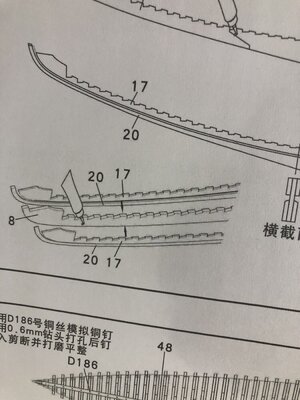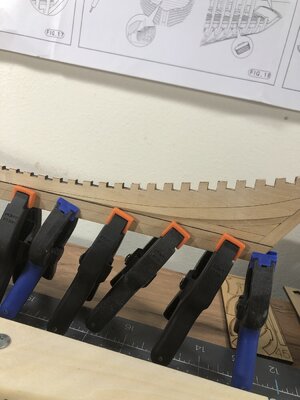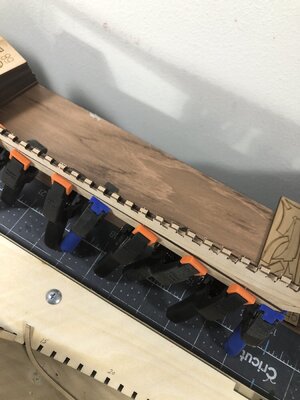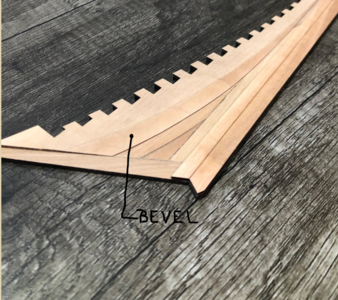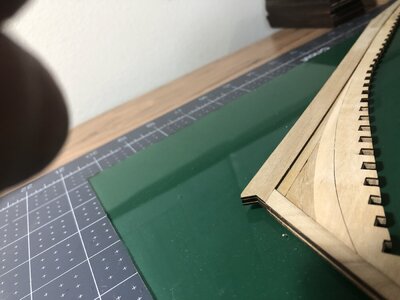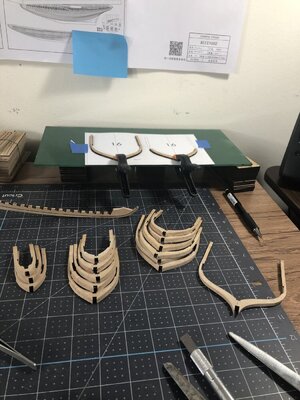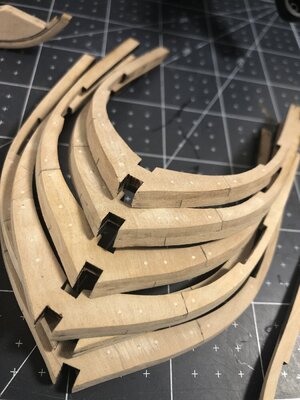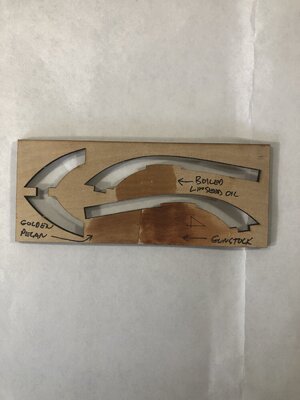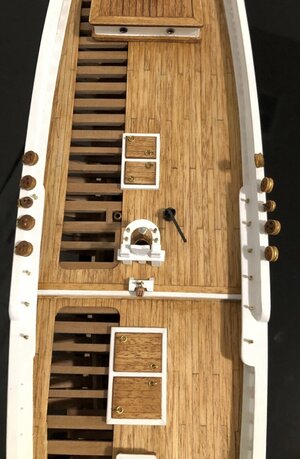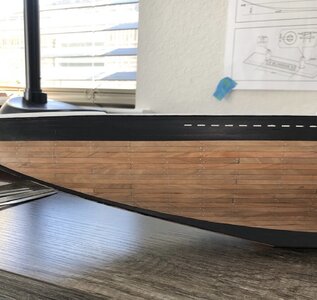Good morning fellow modelers, I have a short weekend update. Below you can see the first 14 ribs plus one towards the stern for setting up intermittent dry fits. These ribs are ready for their final sanding with 320 grit paper. This is sort of an assembly line process where I'll get another 15 or so ready and bring them to this stage as well.
View attachment 359624
Here is a close up showing my solution to placing the faux treenails holding rib sections together. I drilled a 0.8mm hole through with my Dremel drill press then filled the holes with a neutral wood filler. I do like the way most everyone else uses toothpicks, however this method works best for me.
View attachment 359625
Next up is a test piece looking at different surface finishes. So far just regular linseed oil is my favorite. I am looking to preserve the contrast between the tree nails and the frames.
View attachment 359626
Not being any sort of paint or staining expert, I am open to suggestions. There may be some other topcoats to add??
Thanks for checking in and am looking forward to any feedback you may have. As always happy modeling.




